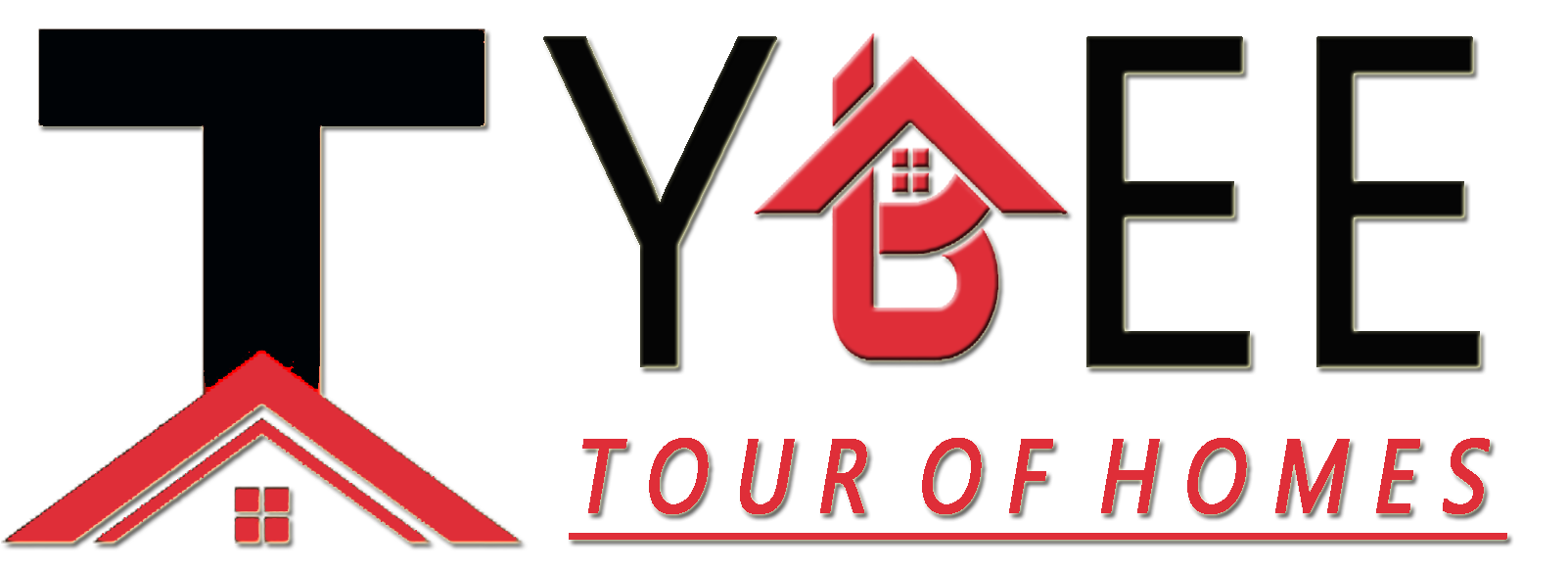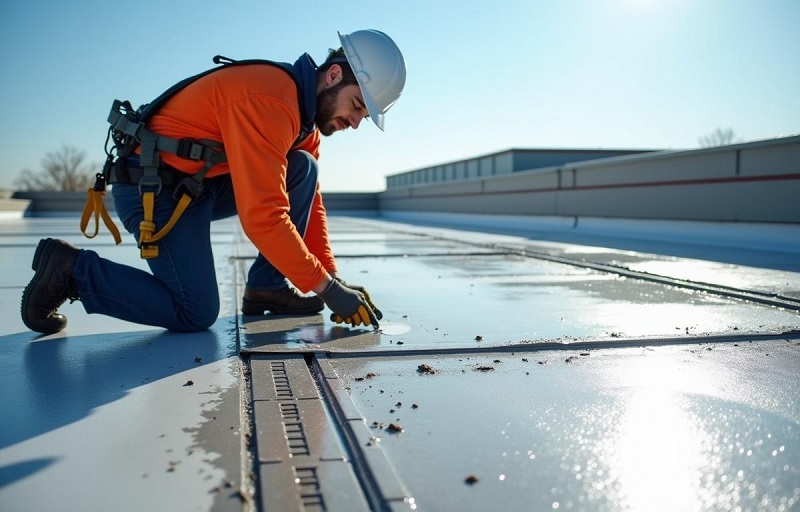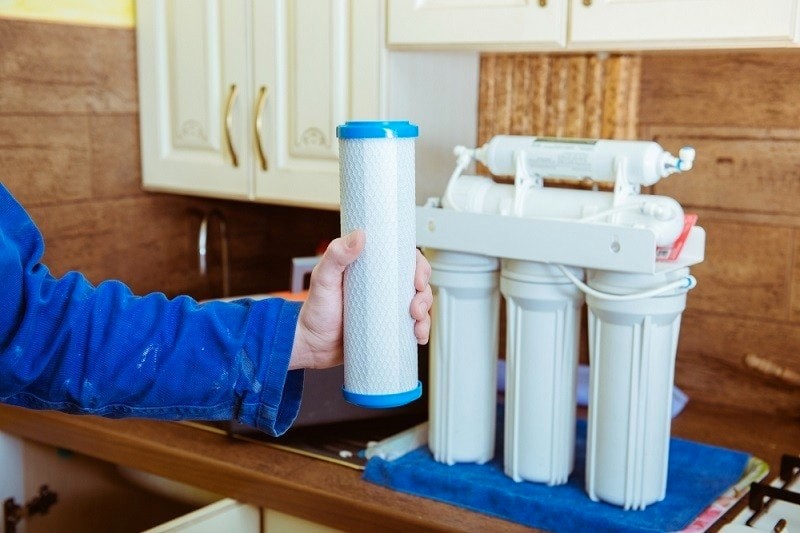Table of Contents
- Understanding Flat Roof Challenges
- Signs of Flat Roof Damage
- Consequences of Delaying Repairs
- Effective Repair Techniques for Flat Roofs
- DIY vs. Professional Repair: Deciding the Best Approach
- Choosing the Right Roofing Contractor
- The Role of Preventative Maintenance in Prolonging Roof Life
- Final Thoughts: Investing in Your Home’s Longevity
Understanding Flat Roof Challenges
The allure of flat roofs lies in their modern aesthetics and utilitarian advantages, such as providing extra living space in the form of rooftop gardens or terraces. However, these architectural gems are not without their unique challenges. One predominant issue is ponding water, which refers to the tendency of water to collect and sit on a flat surface due to inadequate drainage systems. Unlike their pitched counterparts that naturally guide water to the ground, flat roofs depend heavily on efficient drainage to avoid water damage. Thus, regular maintenance checks to clear gutters and spouts before a storm are vital in maintaining the roof’s functionality.
Moreover, the roofing membrane, which acts as the primary water barrier, is susceptible to various damage over time. Sun exposure, temperature fluctuations, and inclement weather can wreak havoc, leading to cracks, blisters, and leaks. If left unchecked, these damages compromise the roof’s integrity, making routine inspections essential. Engaging services like emergency flat roof repair becomes crucial in warding off advanced deterioration, ensuring the roof’s safety and longevity. Regular maintenance extends the roof’s life and minimizes costly repairs in the future. Prompt action prevents minor problems from growing into significant structural issues. It also offers reassurance, ensuring the structure is safeguarded against water damage. Ultimately, a properly cared-for roof enhances the property’s overall worth and functionality.
Signs of Flat Roof Damage
Detecting roof damage early can significantly reduce repair costs and prevent structural issues. Regular homeowner inspections are crucial, especially after adverse weather conditions. Start inside the house by checking ceilings for water stains, which can indicate a compromise in the roof’s waterproofing. Mold or mildew spots, even without visible watermarks, signal potential moisture penetration that needs urgent attention. Externally, look for physical damage, such as blisters or cracks in the membrane, pooling water, or debris accumulation, which exacerbate underlying issues. For flat roofing, factors like material choice and the roof’s age can influence its susceptibility to damage, with flat roofs being particularly prone to deterioration from factors such as standing water or poor drainage, according to GSA.gov. Regular professional inspections complement homeowner checks by catching less apparent signs of damage, thanks to the expert eye that can detect subtle wear and surface anomalies. Investing time in these evaluations is a proactive measure that saves on potential high-cost emergencies.
Consequences of Delaying Repairs
Neglecting necessary roof repairs can lead to consequences that ripple throughout your home’s infrastructure. Water infiltration, a seemingly minor leak, can escalate quickly, compromising insulation and creating a breeding ground for mold, which is costly to remove and hazardous to health. As water continues to seep in, it weakens wooden structures, damages drywall, and adversely affects the home’s energy efficiency.
From a financial viewpoint, postponing repairs may result in higher expenses and possible harm to your property’s value. Insurers may view neglected maintenance as negligence, resulting in higher premiums or outright refusals to cover damage costs. Addressing repairs promptly means maintaining property value and ensuring a safe, healthy living environment.
Effective Repair Techniques for Flat Roofs
The repair strategy for flat roofs varies with the nature and extent of damage. For those dealing with minor leaks or tears, patching the affected area with similar roofing material offers a quick, temporary fix. This method prevents further water ingress but should be regularly monitored to ensure effectiveness over time.
Applying a roofing coating is an effective solution for larger areas or widespread damage that seals leaks and adds a reflective surface, enhancing the roof’s energy efficiency by reducing heat absorption. In severe deterioration, replacement of the roofing membrane is often necessary. Advanced materials like ethylene propylene diene terpolymer (EPDM) and thermoplastic polyolefin (TPO) offer excellent durability and can significantly extend the roof’s lifespan. Investing in these state-of-the-art materials can reduce the need for frequent repairs, providing a long-term solution for homeowners.
DIY vs. Professional Repair: Deciding the Best Approach
Tackling home improvement projects independently can be both cost-saving and rewarding. However, when it comes to flat roof repairs, the complexity of the task often demands professional attention. Although skilled homeowners can perform basic maintenance, such as removing debris or fixing minor leaks, errors made during DIY tasks can result in additional problems, undoing any savings gained.
Expert roofing contractors possess the knowledge and skills to identify and effectively fix problems with flat roofs. Their access to quality materials and equipment ensures that repairs are done efficiently and effectively. Pros also offer warranties on their work, providing homeowners an added assurance of quality and peace of mind. Knowing when to enlist professional help can make a profound difference in the longevity and reliability of your roof repairs.
Choosing the Right Roofing Contractor
When selecting a roofing contractor, due diligence is essential in ensuring a positive and efficient repair experience. A well-researched decision will help prevent costly mistakes and lead to a reliable, long-lasting roof repair. Here’s how you can effectively approach this process:
- Research Contractor Backgrounds: Begin by investigating the contractor’s history, reputation, and experience in the industry. Look for professionals specializing in flat roof repairs, which require specific expertise. Verify their background by reviewing their qualifications, past projects, and length of time in business.
- Customer Reviews and Testimonials: Internet reviews and testimonials offer insights into former clients’ experiences. Pay attention to positive and negative reviews to gauge the contractor’s ability to resolve any issues arising during the project.
- Licensing and Insurance: Verifying that the contractor holds a valid license and insurance is crucial. A licensed contractor has met local regulatory requirements and will likely adhere to industry standards. Insurance coverage, particularly liability insurance and worker’s compensation, protects you in the event of accidents or damage during the repair process.
- Materials and Techniques: Inquire with the contractor regarding the exact materials they intend to utilize for the repair, particularly if you have doubts about durability or lifespan. Trustworthy contractors will be open about the materials they suggest, detailing the advantages and disadvantages of each. They must also be capable of describing the techniques and methods they employ for repairs.
- Precise, Itemized Estimate: Request a detailed, itemized estimate to avoid hidden fees or unexpected costs. The estimate should outline all aspects of the repair, including labor, materials, and any additional charges. A well-prepared estimate gives you a clear picture of the cost and helps prevent misunderstandings during the project.
- Expertise and Communication: An experienced contractor in flat roof repairs should be able to explain the project’s scope and respond to any questions you may have. They ought to be willing to discuss the process, schedule, and anticipated results. Effective communication prevents unexpected outcomes and ensures the work meets your expectations.
- Trusted Platforms for Contractor Reviews: Platforms such as Angie’s List, HomeAdvisor, and Better Business Bureau can be helpful resources for checking contractor credentials, reading reviews, and finding expert advice on selecting the right professional for your roofing needs. These platforms often feature pre-vetted contractors, ensuring you have access to reputable options.
By performing comprehensive due diligence, you can select a roofing contractor who aligns with your standards and delivers quality craftsmanship. This will improve the safety and durability of your flat roof. This meticulous selection procedure guarantees you receive optimal value and tranquility over time.
The Role of Preventative Maintenance in Prolonging Roof Life
Preventative maintenance is the cornerstone of long-lasting roof life. By scheduling regular maintenance activities, homeowners can address potential issues before they become severe. Everyday preventative tasks include clearing leaves and debris from drainage areas to prevent water buildup and routinely checking for membrane damage or integrity breaches.
Seasonal considerations are equally important. For instance, preparing the roof before winter can prevent ice dams, while post-winter checks help identify and rectify damage from snow and ice. Establishing a consistent maintenance schedule preserves the roof’s structural integrity and optimizes its efficiency throughout the year.
Final Thoughts: Investing in Your Home’s Longevity
Embracing a proactive maintenance approach for your flat roof is essential for guaranteeing the safety and durability of your residence. By promptly tackling problems such as leaks, standing water, or deterioration, you stop them from developing into pricier and broader repairs. This prompt action safeguards the roof’s structure and guarantees the safety of those beneath it.
Prompt action also protects your property’s value. A properly maintained roof is an important advantage for prospective buyers, indicating that the house has been looked after. This can enhance your property’s market worth and appeal to buyers, assisting you in preventing future issues when it comes time to sell.
Regular roof care and maintenance extend the roof’s lifespan, allowing you to delay the need for a full replacement. By avoiding minor issues, you invest wisely in your home’s future, ensuring a secure, comfortable living environment while protecting its long-term value.





